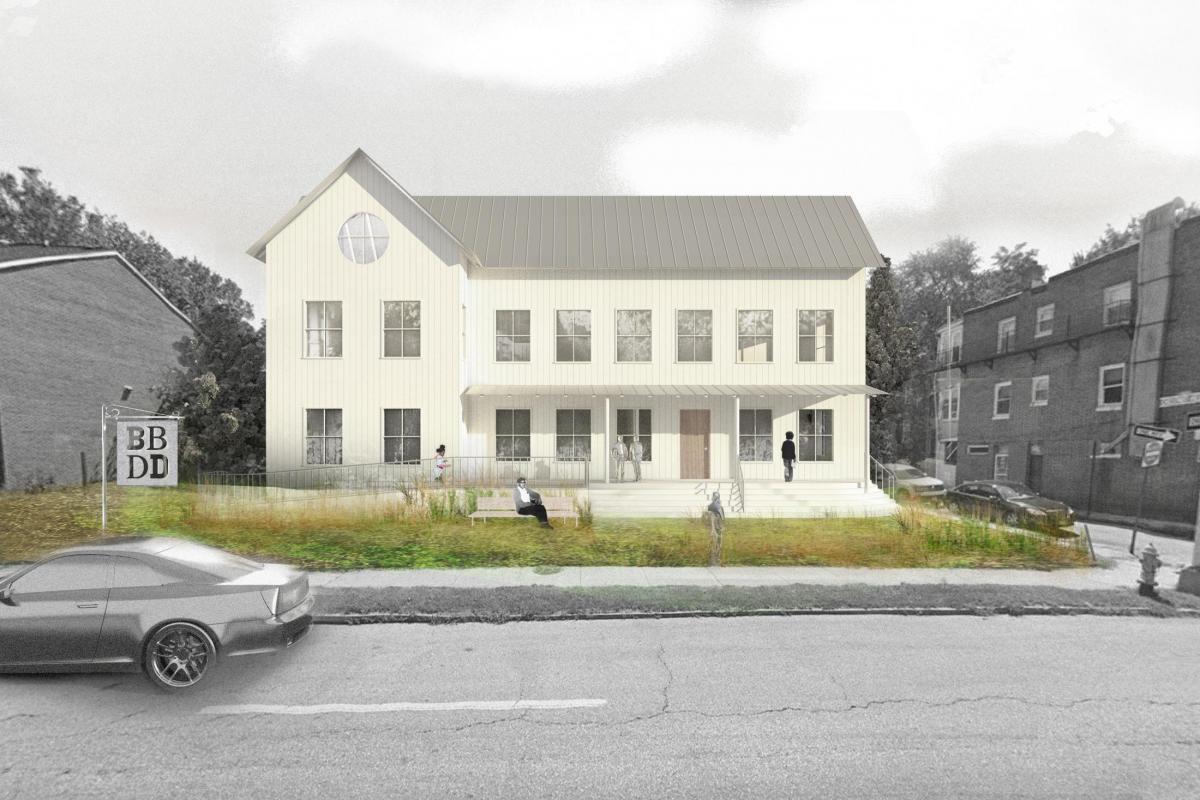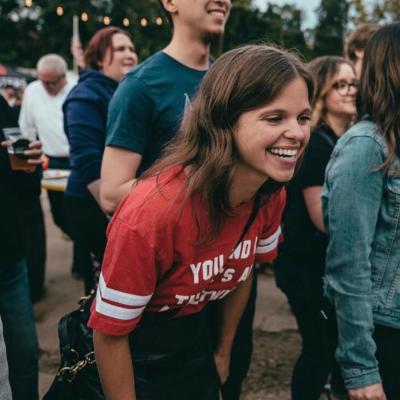
There’s an empty double lot on the corner of Greenmount and Chestnut Hill Avenues that, in the next few years, could become one of the most visionary spaces in Baltimore.
Internationally renowned artist Derrick Adams has purchased the Waverly property, which he plans to turn into the Black Baltimore Digital Database (BBDD), a multi-purpose cultural center dedicated to cataloging historical and ongoing contributions made by the Black citizens of Baltimore, which have long been overshadowed by those of their white counterparts.
“Growing up in Baltimore, as a Black person, as an artist, it has always been a challenge to understand the creative contributions of Black Baltimore on American culture—the music, the arts, the writing,” says Adams, 52, who grew up in Park Heights before moving to New York, where he pursued a career as a multidisciplinary artist, with works now included in the prestigious permanent collections like the Metropolitan Museum of Art. “These are things thatI want to have available not just for Black History Month but every day of the week to help people understand the overall picture of the city, how it came to be what it is now, and what it could be in the future. It’s so important to know history and understand history and have a place to discover history, in a way that’s visually interesting.”
Set to open in 2024, the BBDD will collect and store digitized archival materials, serving as both a private collection and public center. Through the latter lens, it could be utilized for education, research, and analysis, with a goal of fostering a more equitable sense of agency for Black residents and dynamic engagement for all visitors.
“I’m not an archivist, but there is a need to have a facility that people can actually come to, and sift through images, digital recordings, audio, or video, and also learn the techniques of archiving,” says Adams, who hopes to employ local archivists of color, in part to help build community trust.
Adams chose the Waverly neighborhood for the BBDD because of its central location at a cultural crossroads of Baltimore, near branches of the Enoch Pratt Free Library, the Johns Hopkins Homewood campus, the Baltimore Museum of Art, and Waverly Farmers Market, surrounded by both Black and white communities, and just a straight shot to Towson or downtown. It is also the site of The Last Resort Artist Retreat, a Black creative residency program founded by Adams and located just up the road from the BBDD, with the proximity lending to potential collaboration between the two spaces.
“My family has lived all over Baltimore,” says Adams. “I see every part of the city as having some relationship to me. My cousins live on the east side, the west side, the north side, Baltimore County. Waverly to me is like the middle of all of those places. I always felt like a place that people just passed through, but I was always curious about it as a midtown space that should be a destination.”
In addition to the state-of-the-art upstairs digital archive lab, which he envisions like a Mac-store-meets-library, the BBDD will also have two multimedia spaces: a downstairs art gallery, named for late Baltimore photographer I. Henry Phillips Sr., as well as a screening room. Both will feature works by local and international artists (perhaps one day including the works of local journalist Lawrence Burney, whose arts publication True Laurels documents Black culture, and who happens to be Adams’ nephew, with the two collaborating on an archival exhibition at the Eubie Blake Cultural Center in 2019, which provided some inspiration for the BBDD. A co-op coffee shop and gift store will also feature items created by Black-owned businesses, while a front lawn will be activated as a shared community space.
Adams and his partners—including Columbia professor and architect Jelisa Blumberg, who serves as creative director, and JHU sociology research professor Kali-Ahset Amen, who is acting as project advisor—are currently in the planning and development stages, which includes working with consultants to develop a digital interface system for their database technology. A new $1.25-million grant from the Andrew W. Mellon Foundation, which is fiscally sponsored by the Eubie Blake National Jazz Institute and Cultural Center, has helped kickstart that work, with a fundraising campaign for the building’s construction to launch in the coming weeks.
“We don’t want it to just be a building, but a destination,” says Adams. “And not just Black Baltimoreans, but anyone who understands how important it would be for Black people in Baltimore to know a little bit more about Baltimore, and how valuable that would be for the city, to give other groups who have been disproportionately left out the chance to actually learn more about contributions made by people like them. I believe this place will be an anchor.”
